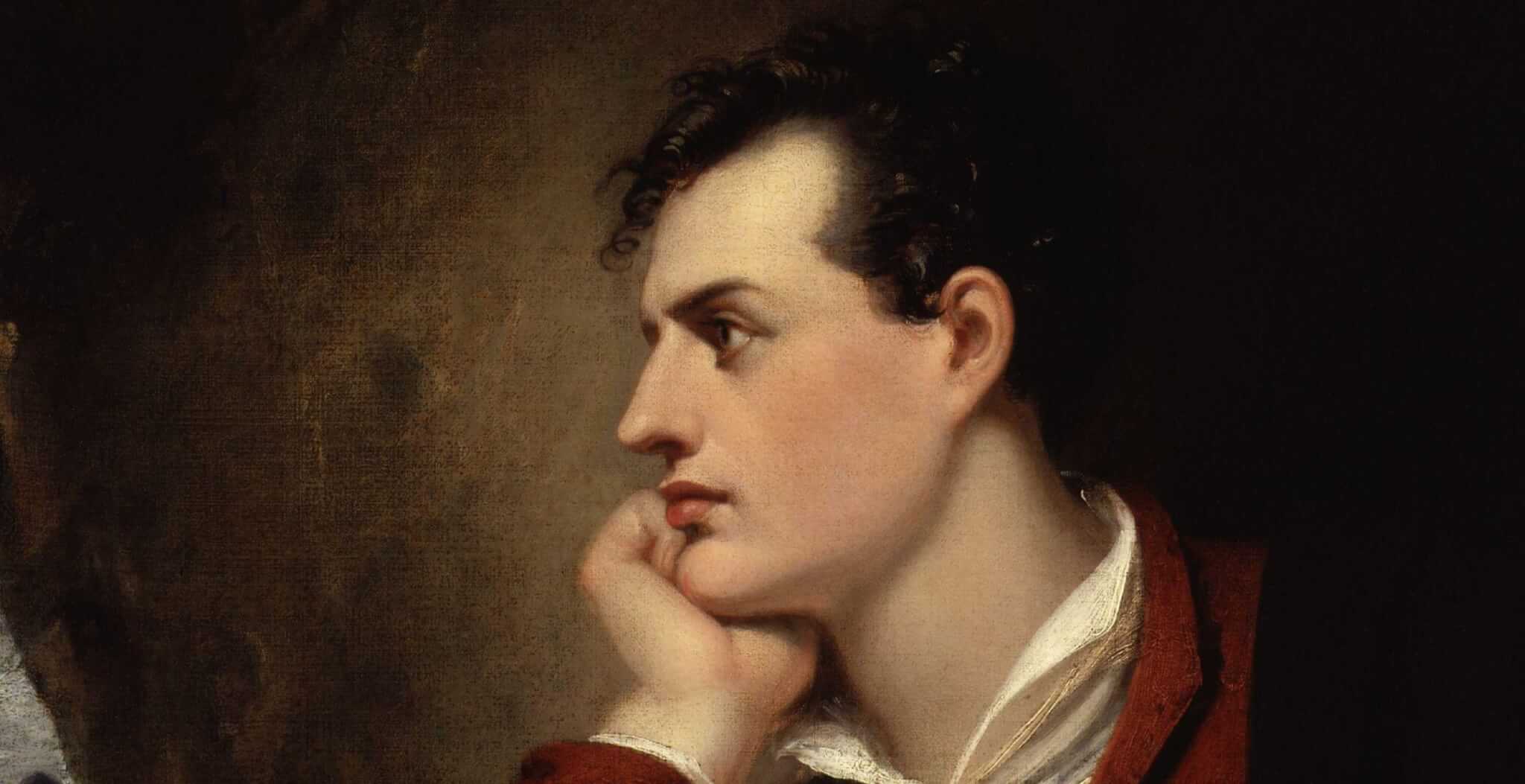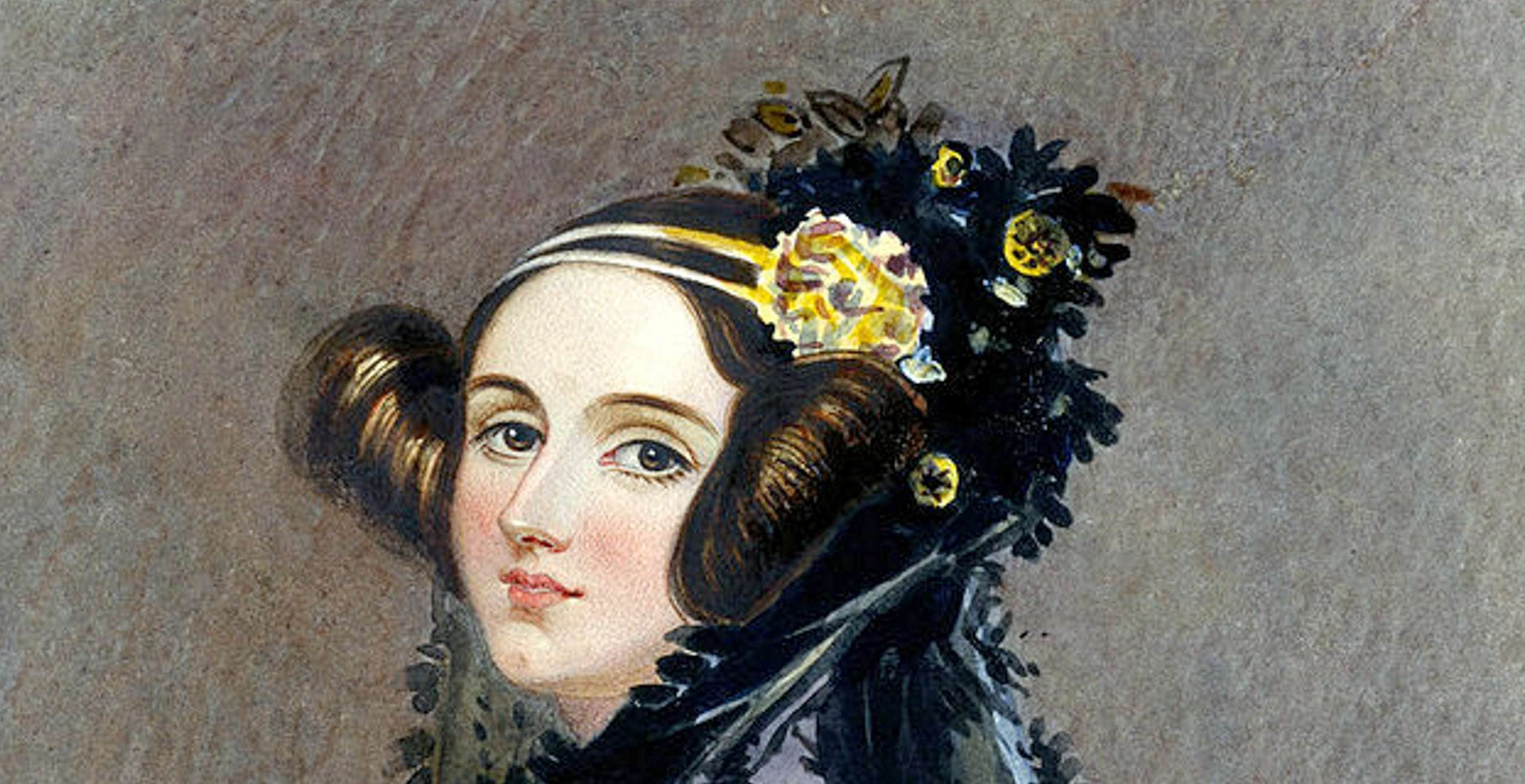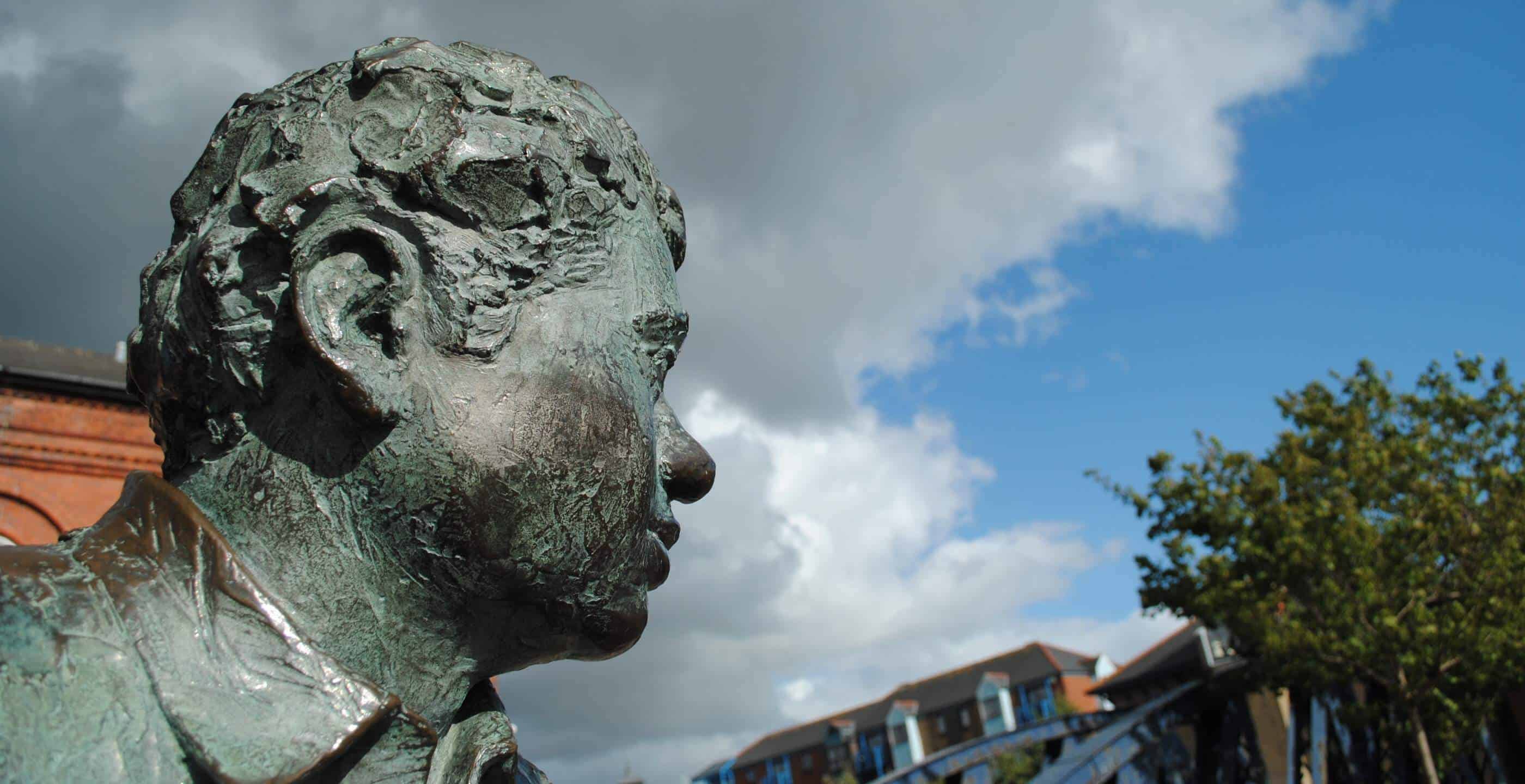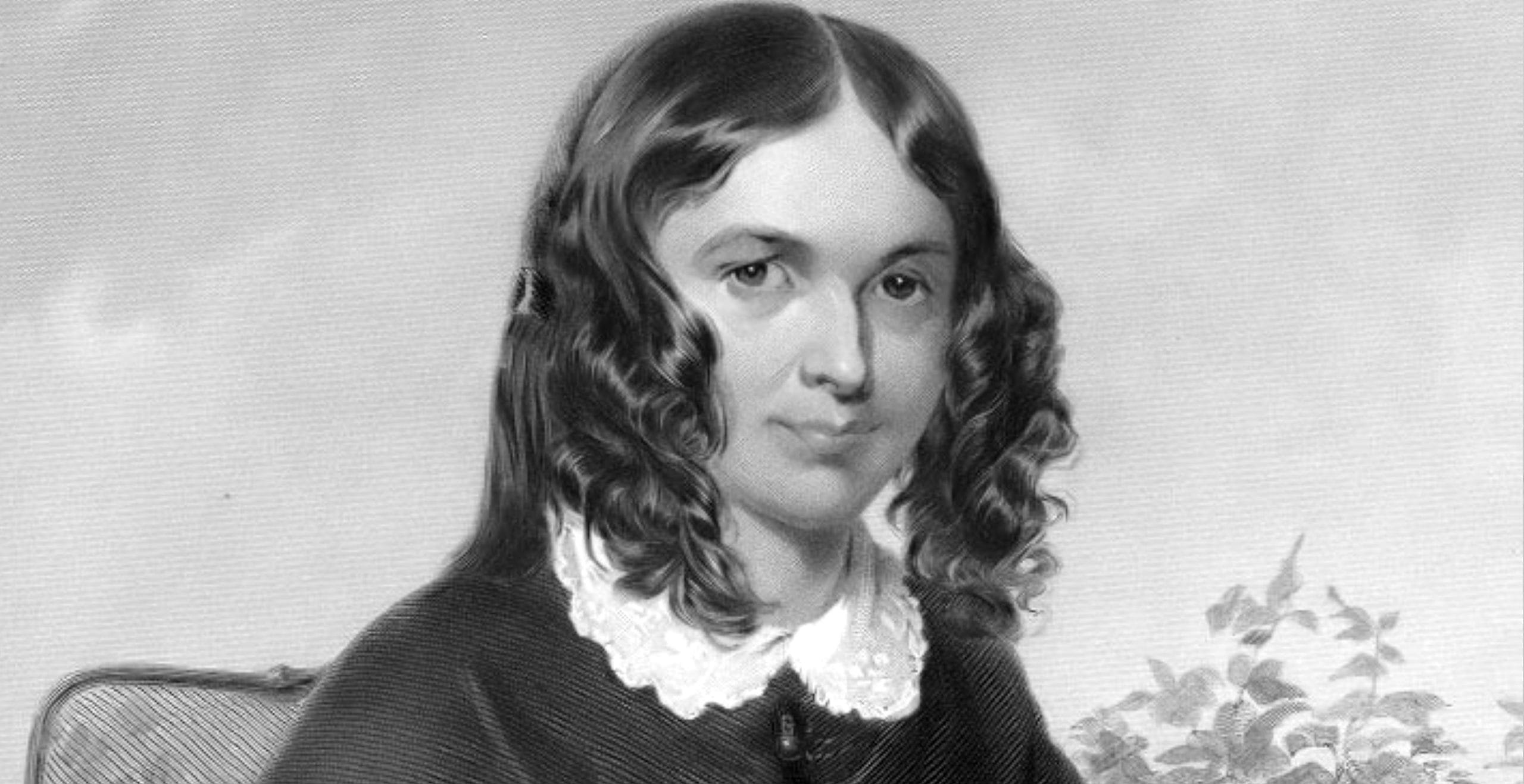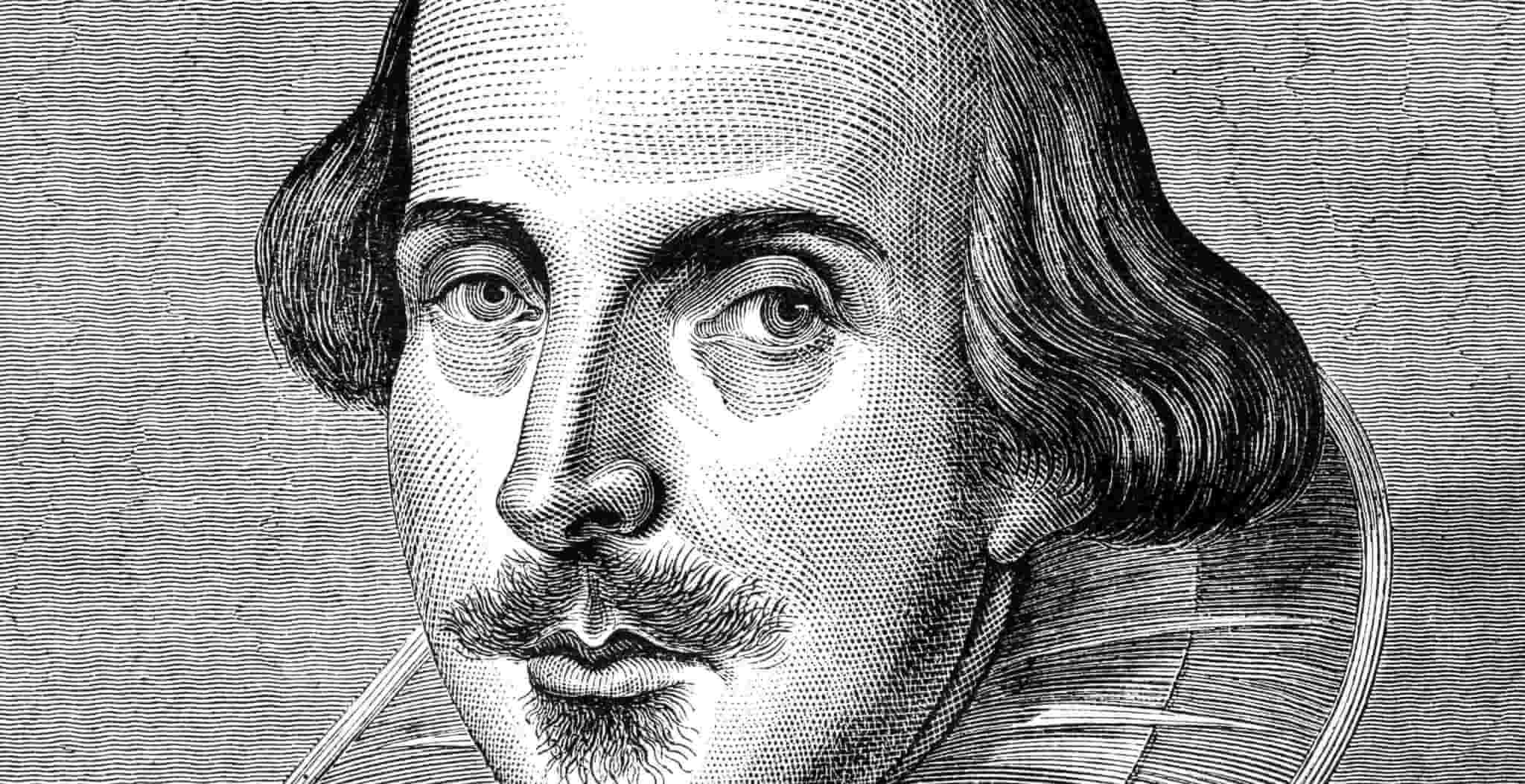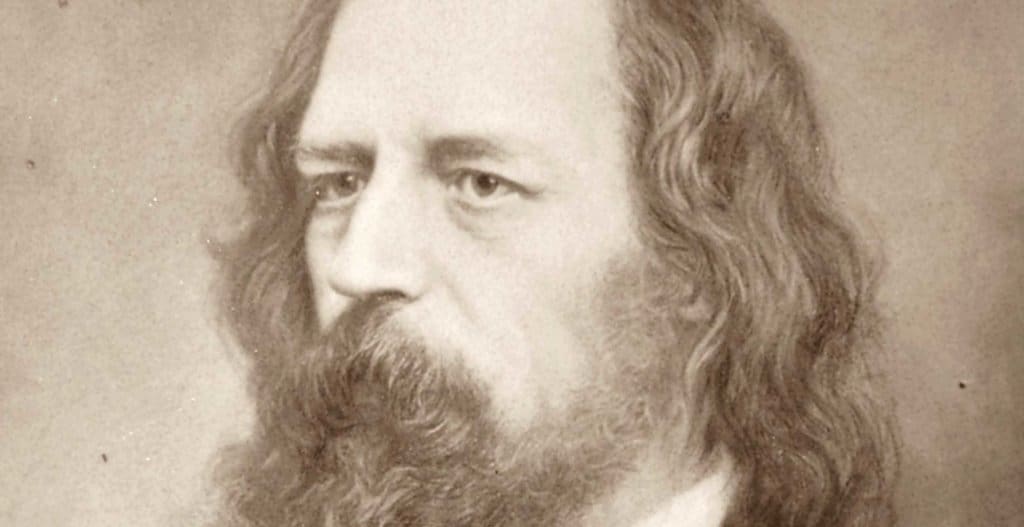As famous for his scandalous private life as for his work, Byron was born on 22nd January 1788 in London and inherited the title Baron Byron from his great uncle at the age of 10.
He endured a chaotic childhood in Aberdeen, brought up by his schizophrenic mother and an abusive nurse. These experiences, plus the fact that he was born with a club foot, may have had something to do with his constant need to be loved, expressed through his many affairs with both men and women.
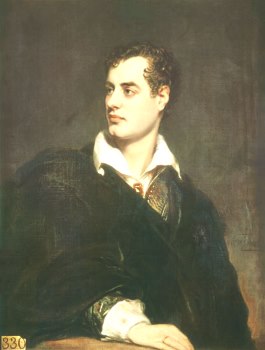
He was educated at Harrow School and Trinity College, Cambridge. It was at Harrow that he experienced his first love affairs with both sexes. In 1803 at the age of 15 he fell madly in love with his cousin, Mary Chaworth, who did not return his feelings. This unrequited passion was the basis for his works ‘Hills of Annesley’ and ‘The Adieu’.
Whilst at Trinity he experimented with love, discovered politics and fell into debt (his mother said he had a “reckless disregard for money”). When he turned 21 he took up his seat in the House of Lords; however the restless Byron left England the following year for a two-year European tour with his great friend, John Cam Hobhouse. He visited Greece for the first time and fell in love with both the country and the people.
Byron arrived back in England in 1811 just as his mother died. Whilst on tour he had begun work on the poem ‘Childe Harold’s Pilgrimage’, a partly autobiographical account of a young man’s travels abroad. The first part of the work was published to great acclaim. Byron became famous overnight and was much sought after in Regency London society. His celebrity was such his future wife Annabella Milbanke called it ‘Byromania’.
In 1812, Byron embarked on a affair with the passionate, eccentric – and married – Lady Caroline Lamb. The scandal shocked the British public. He also had affairs with Lady Oxford, Lady Frances Webster and also, very probably, with his married half-sister, Augusta Leigh.
In 1814 Augusta gave birth to a daughter. The child took her father’s surname of Leigh but gossip was rife that the baby girl’s father was in fact Byron. Perhaps in an attempt to recover his reputation, the following year Byron married Annabella Milbanke, with whom he had a daughter Augusta Ada. Because of Byron’s many affairs, the rumours of his bisexuality (homosexuality was illegal at this time) and the scandal surrounding his relationship with Augusta, the couple separated shortly after the birth of their child.
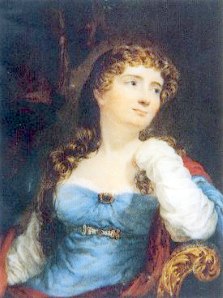
Annabella, Lady Byron
In April 1816 Byron fled England, leaving behind a failed marriage, notorious affairs and mounting debts. He spent that summer at Lake Geneva with the poet Percy Bysshe Shelley, his wife Mary and Mary’s half sister Claire Clairmont, with whom Byron had had an affair whilst in London. Claire was an attractive, lively and voluptuous brunette and the couple rekindled their affair. In 1817 she returned to London and gave birth to their their daughter, Allegra.
Byron travelled on to Italy. In Venice he had more affairs, with Marianna Segati, his landlord’s wife and Margarita Cogni, wife of a Venetian baker.
The sale of Newstead Abbey for £94,500 in the autumn of 1818 cleared Byron’s debts and left him with a generous income.
By now, Byron’s life of debauchery had aged him well beyond his years. However in 1819, he began an affair with the Countess Teresa Guiccioli, only 19 years old and married to a man nearly three times her age. The two became inseparable; Byron moved in with her in 1820.
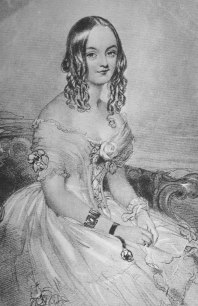
Teresa Guiccioli
It was during this period in Italy that Byron wrote some of his most famous works, including ‘Beppo’, ‘The Prophecy of Dante’ and the satiric poem ‘Don Juan’, which he never finished.
By now Byron’s illegitimate daughter Allegra had arrived in Italy, sent by her mother Claire to be with her father. Byron sent her away to be educated at a convent near Ravenna, where she died in April 1822. Later that same year Byron also lost his friend Shelley who died when his boat, the Don Juan, went down at sea.
His earlier travels had left Byron with a great passion for Greece. He supported the Greek war for independence from the Turks and in 1823 left Genoa to travel to Cephalonia to become involved. He spent £4000 refitting the Greek fleet and in December 1823 sailed to Messolonghi, where he took command of a Greek unit of fighters.
His health began to deteriorate and in February 1824, he fell ill. He never recovered and he died at Missolonghi on April 19th.
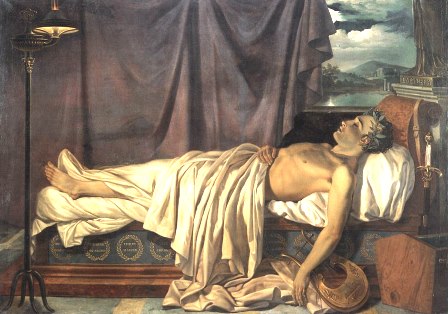
His death was mourned throughout Greece where he was revered as a national hero. His body was brought back to England to be buried in Westminster Abbey but this was refused on account of his “questionable morality”. He is buried at his ancestral home Newstead Abbey, in Nottinghamshire.
Published: 6th May 2015
